
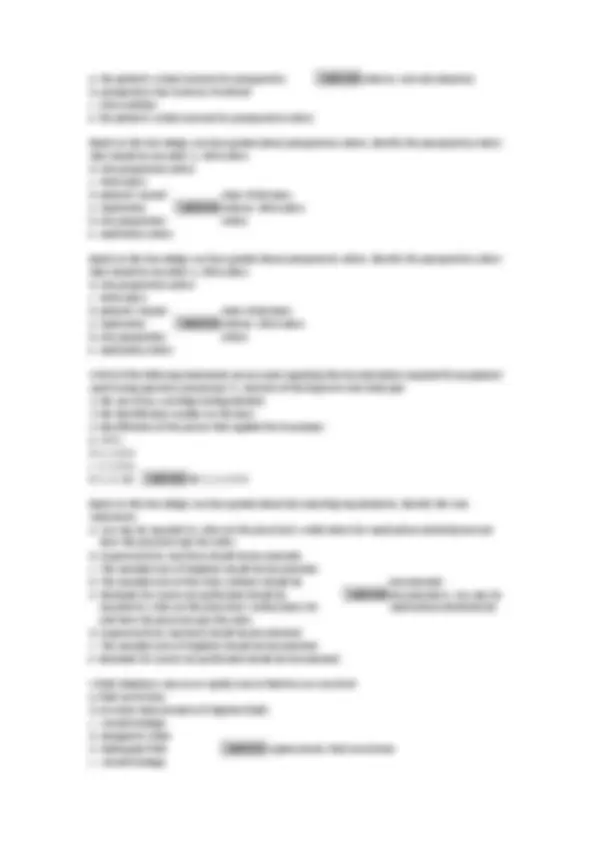


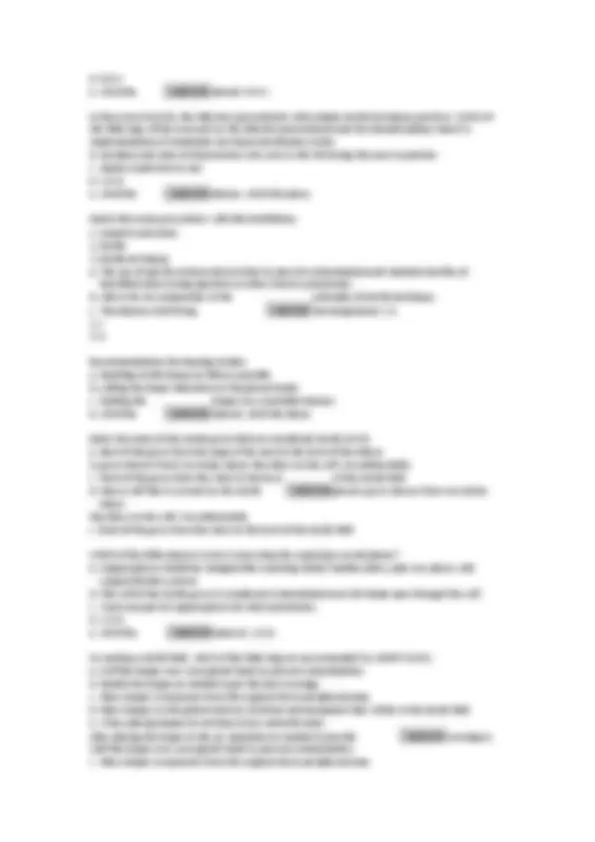
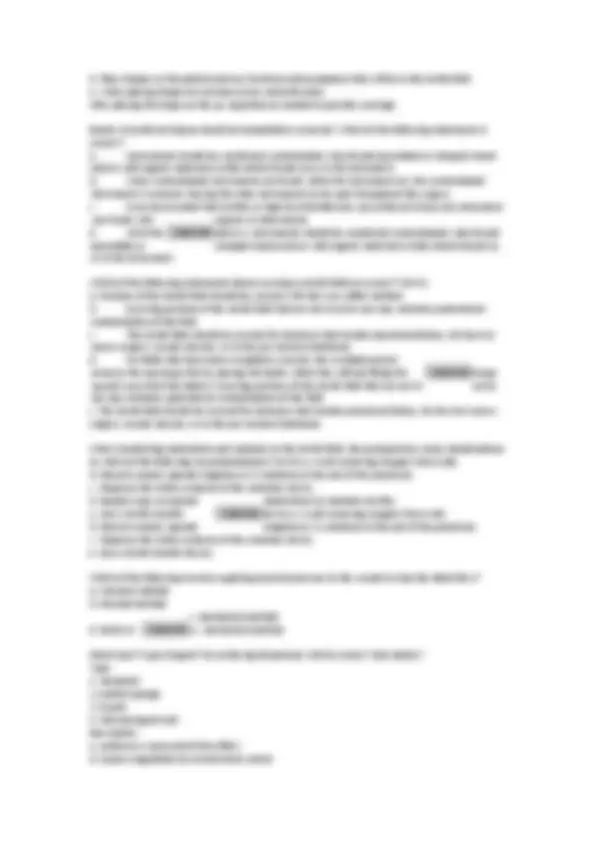
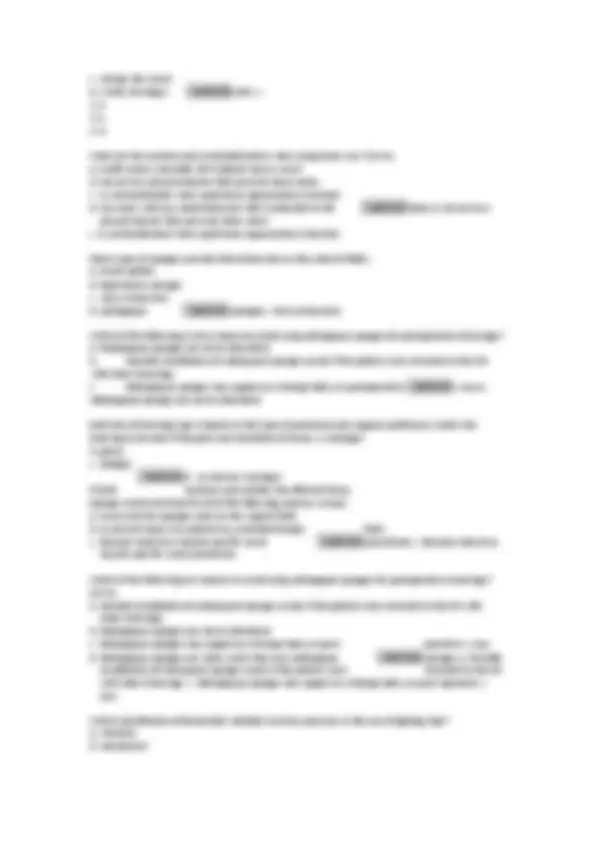
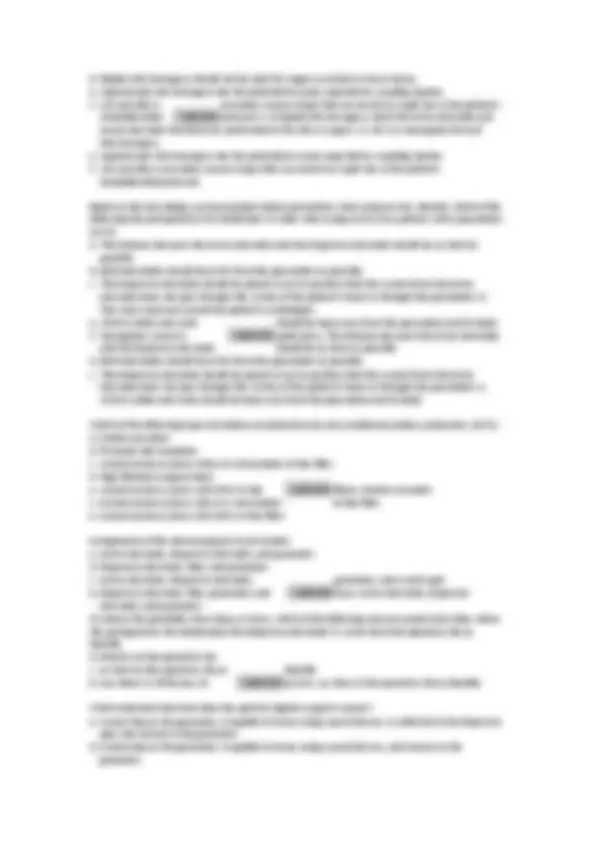
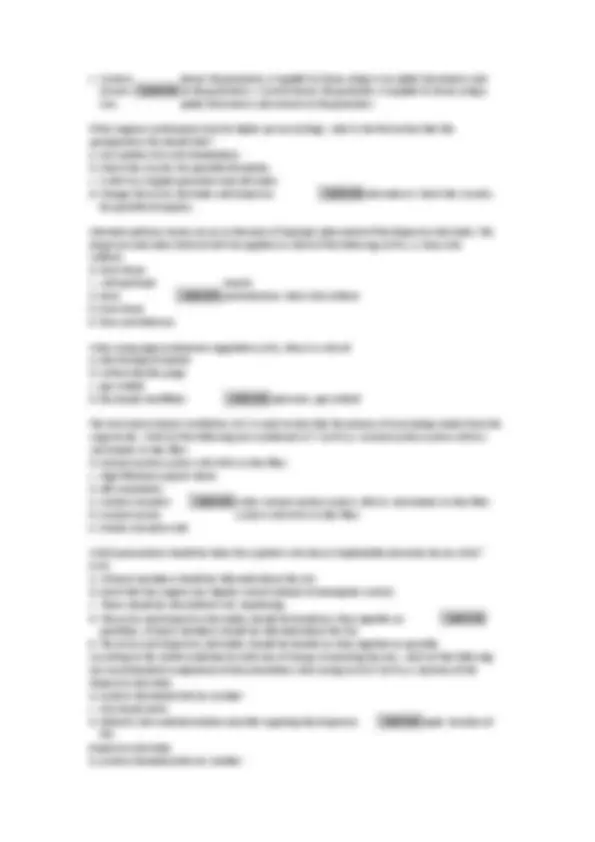
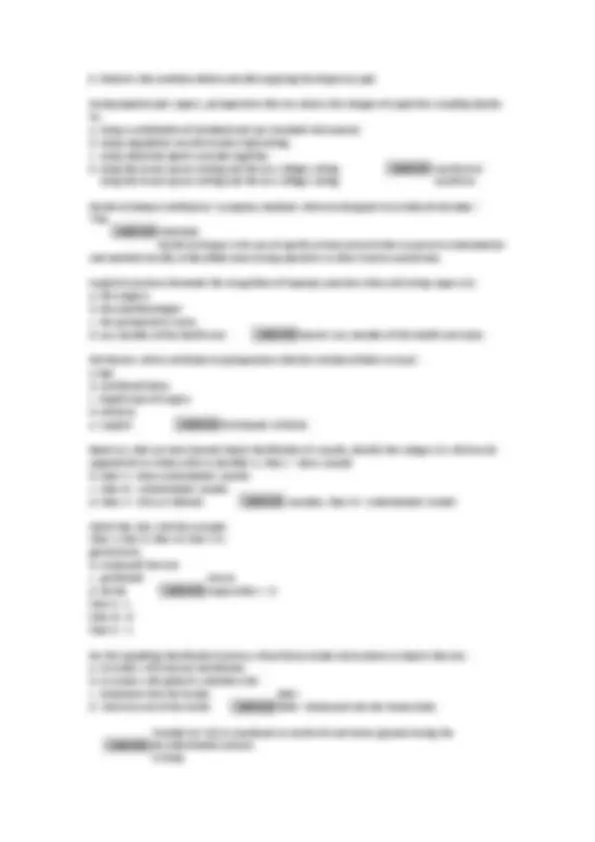
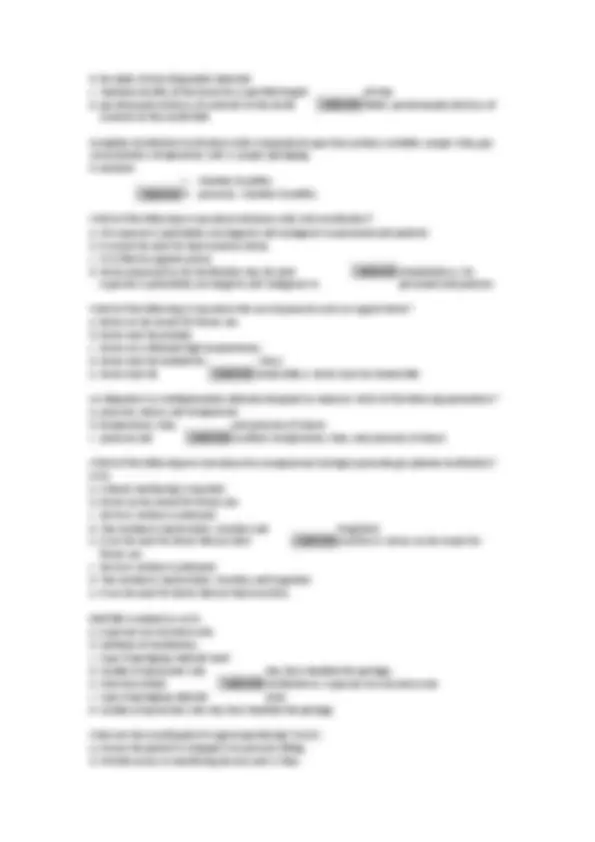
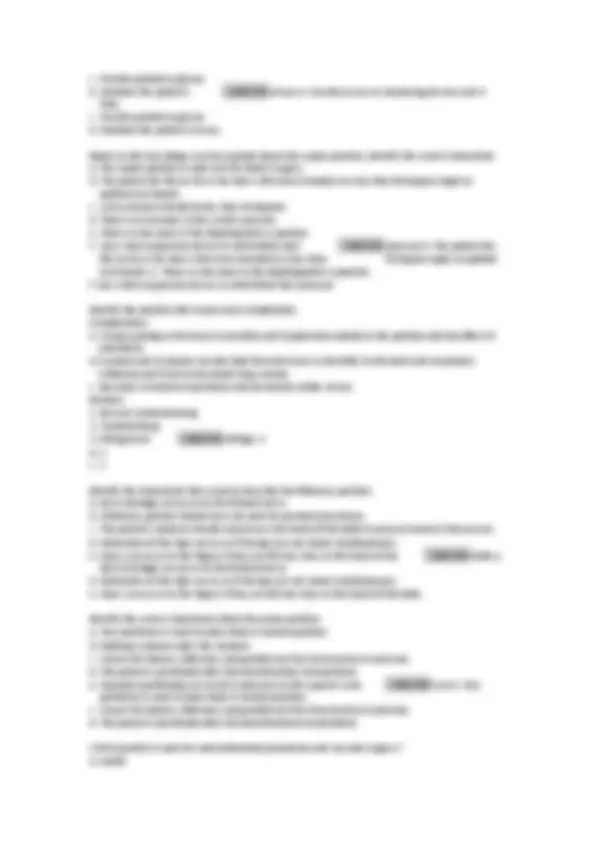
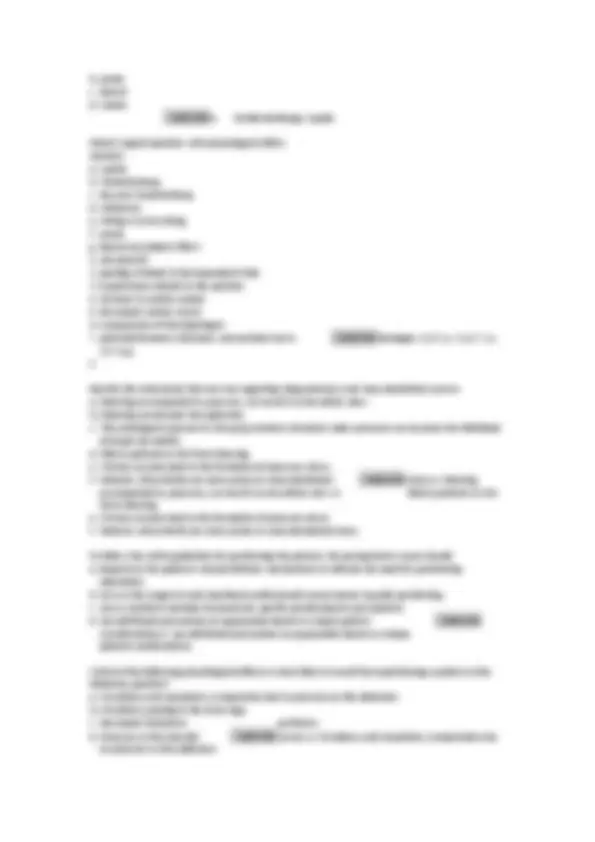
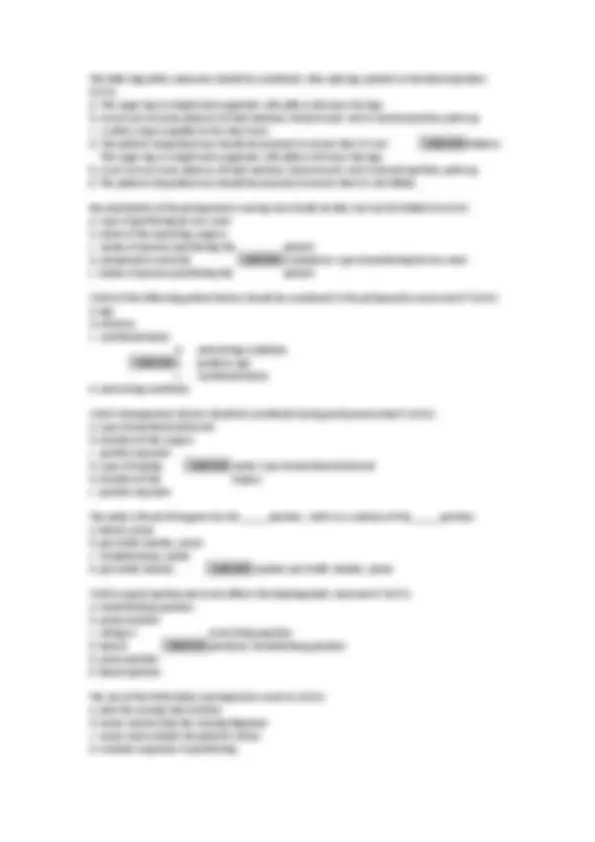
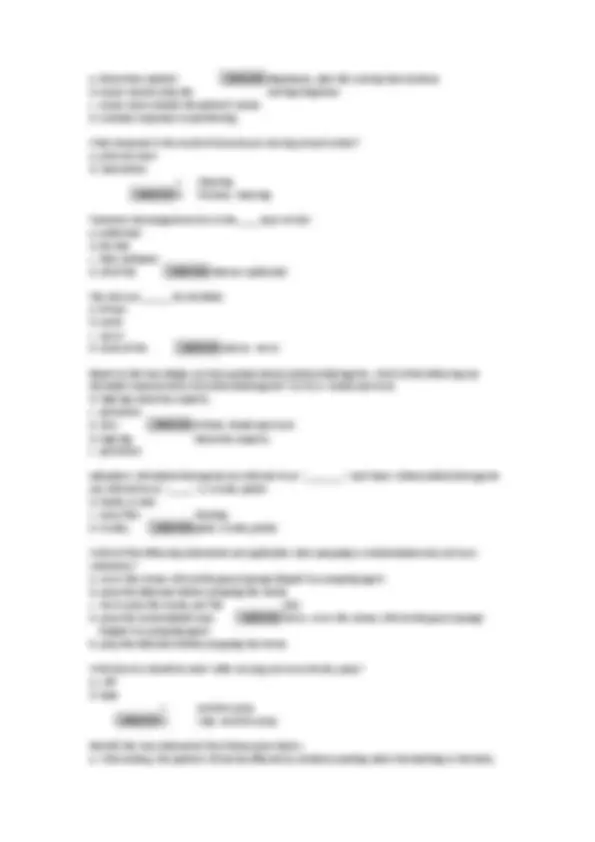
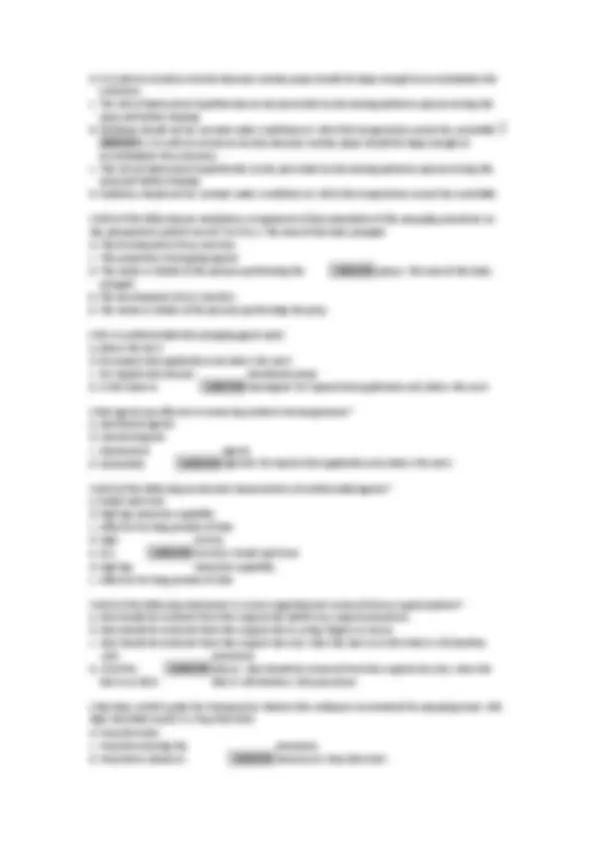
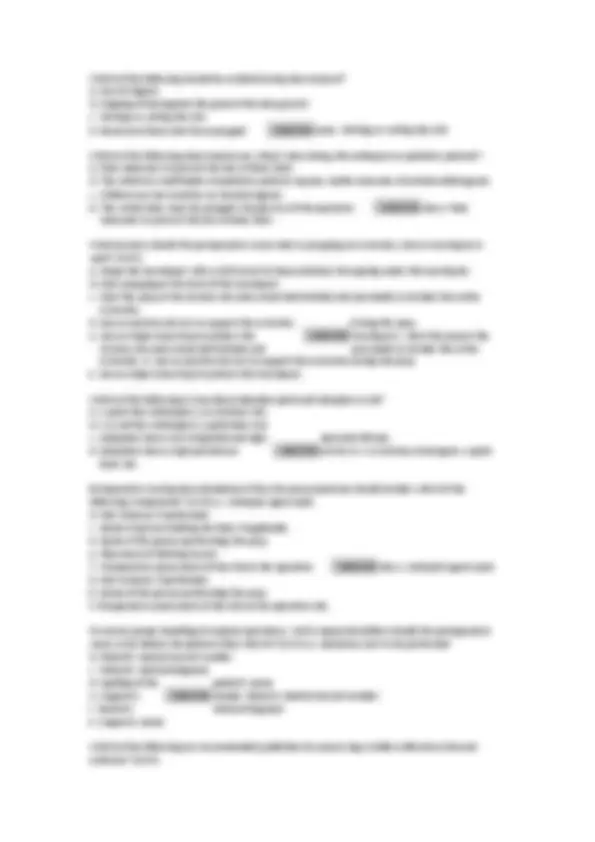
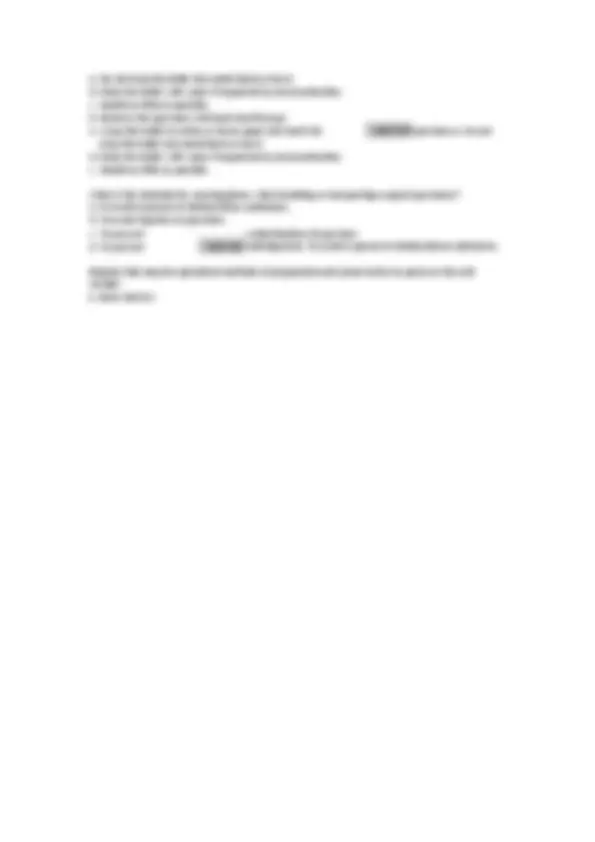
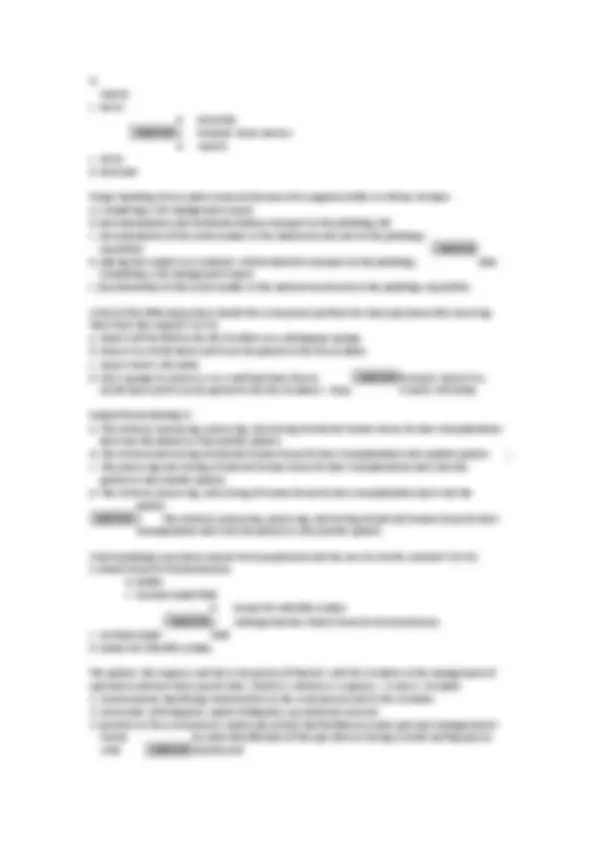
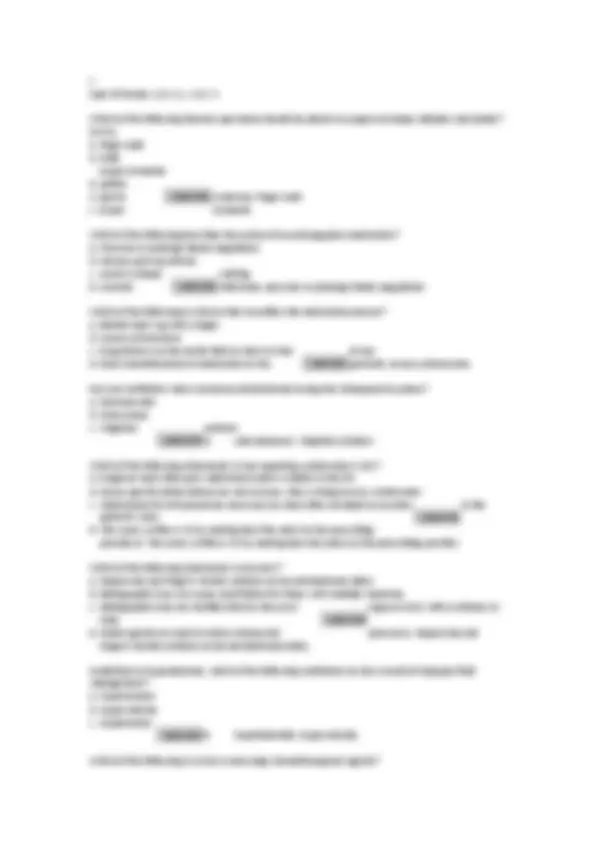
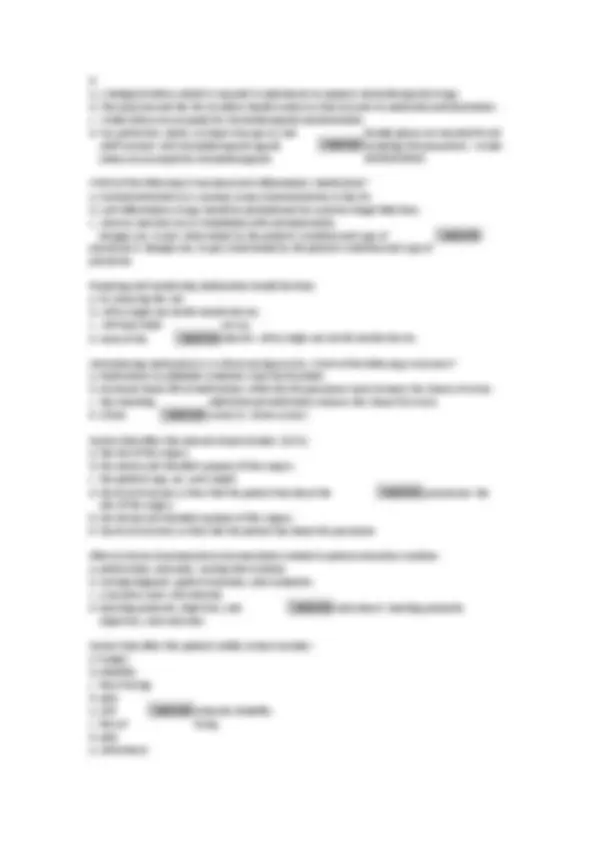
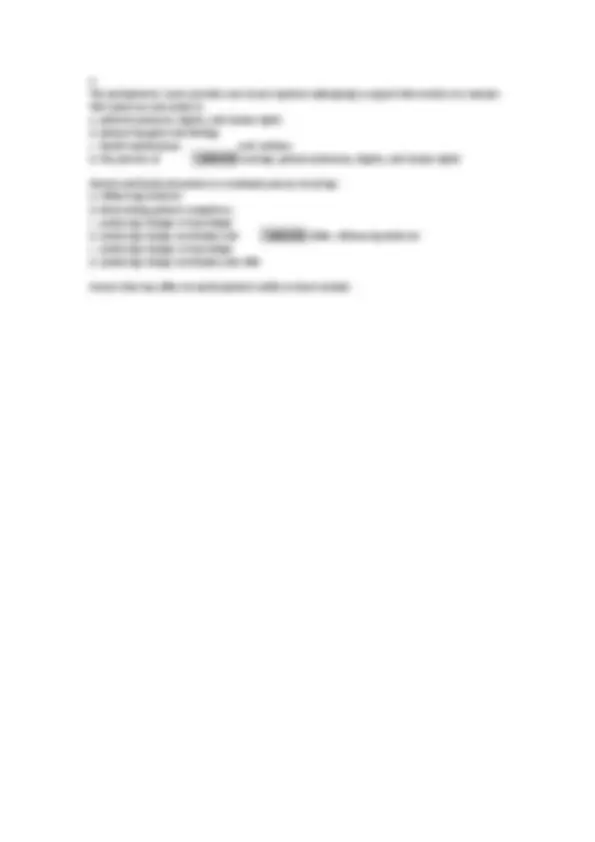
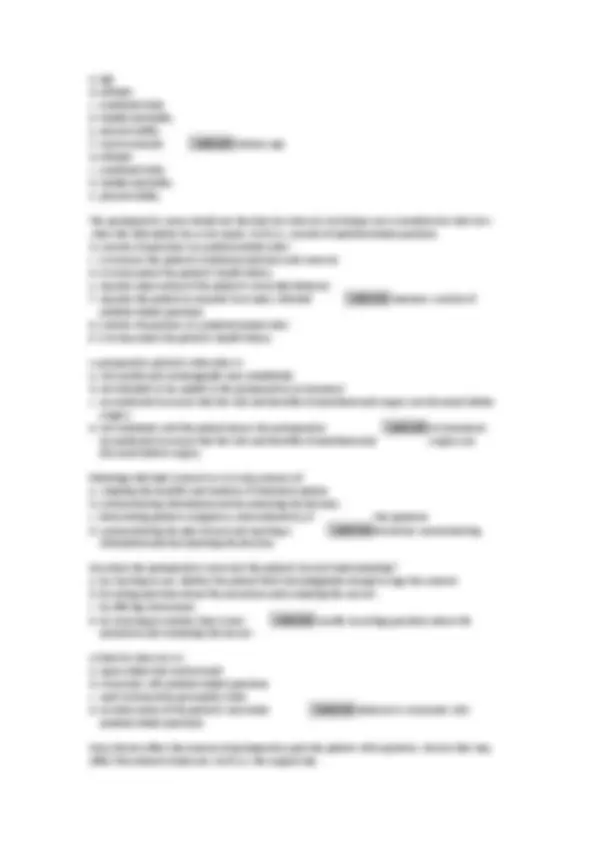
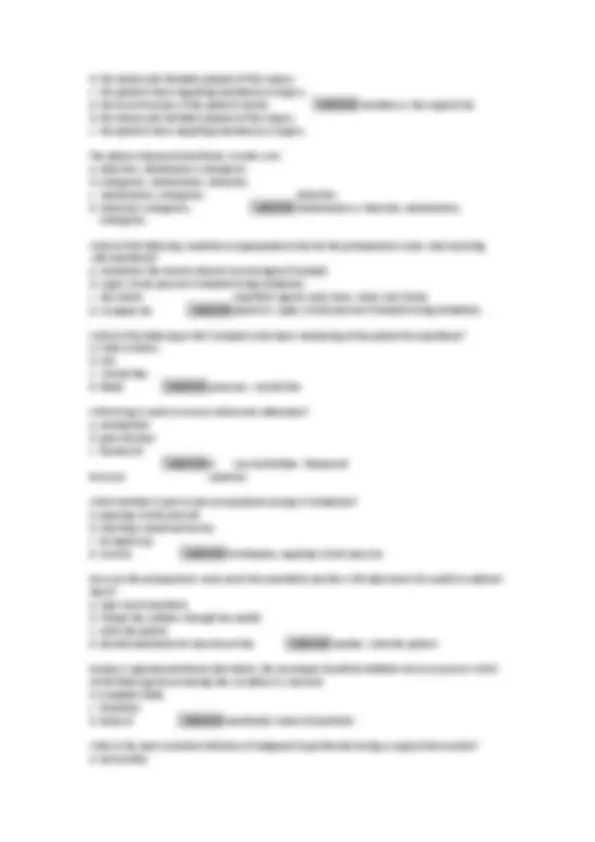
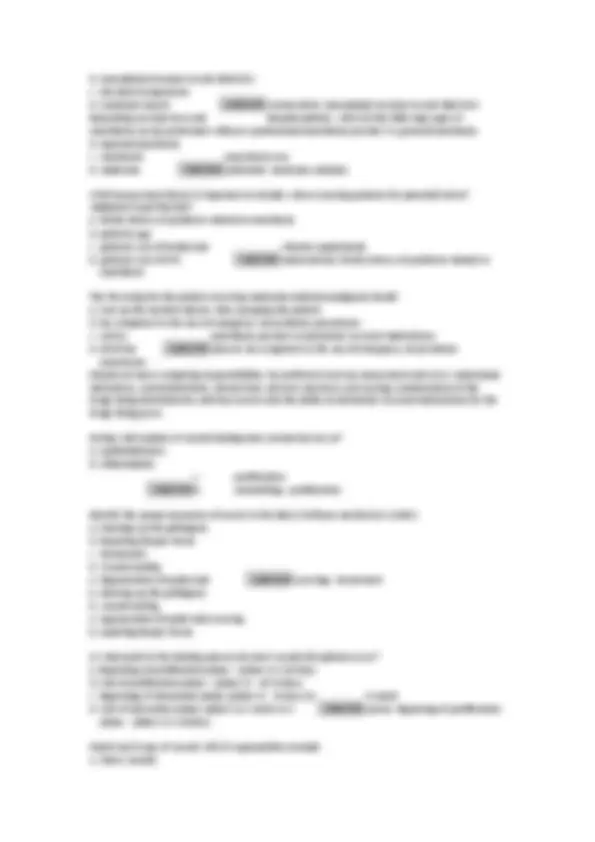

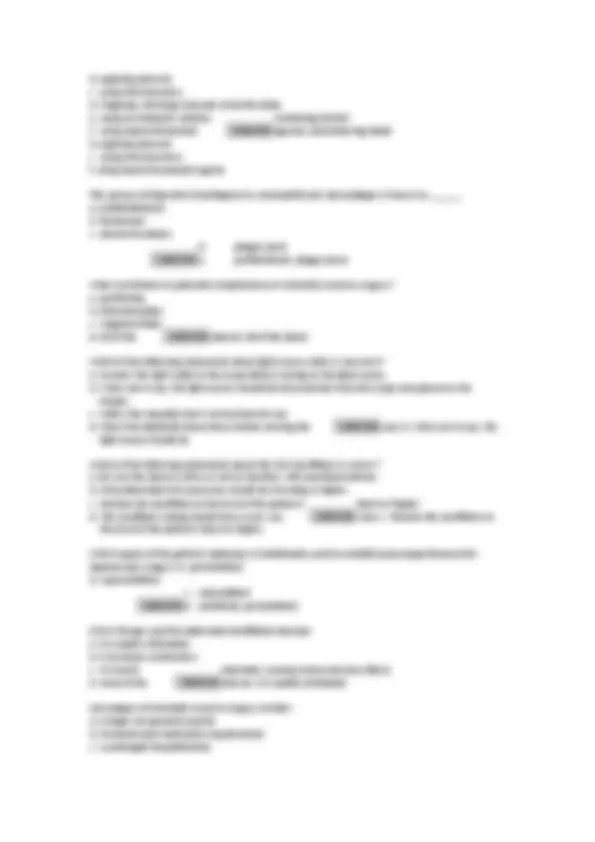
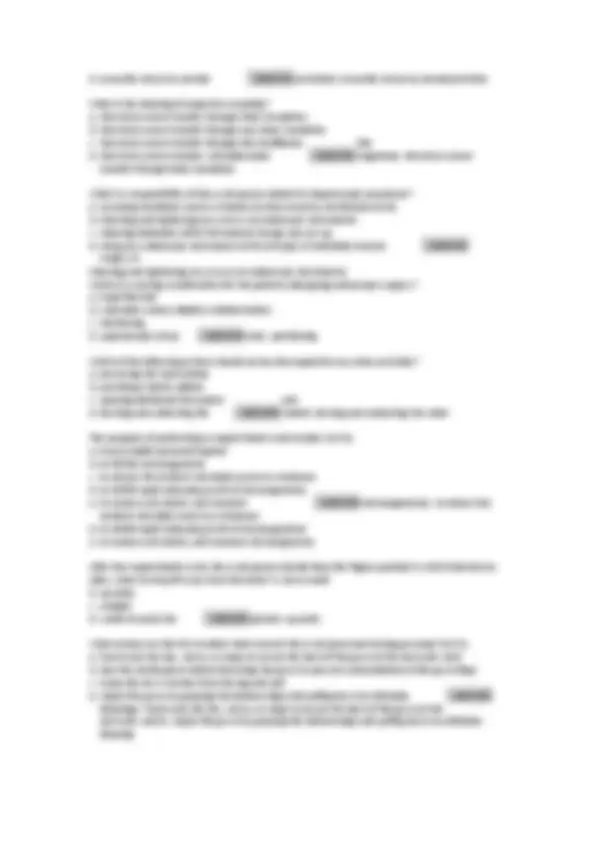
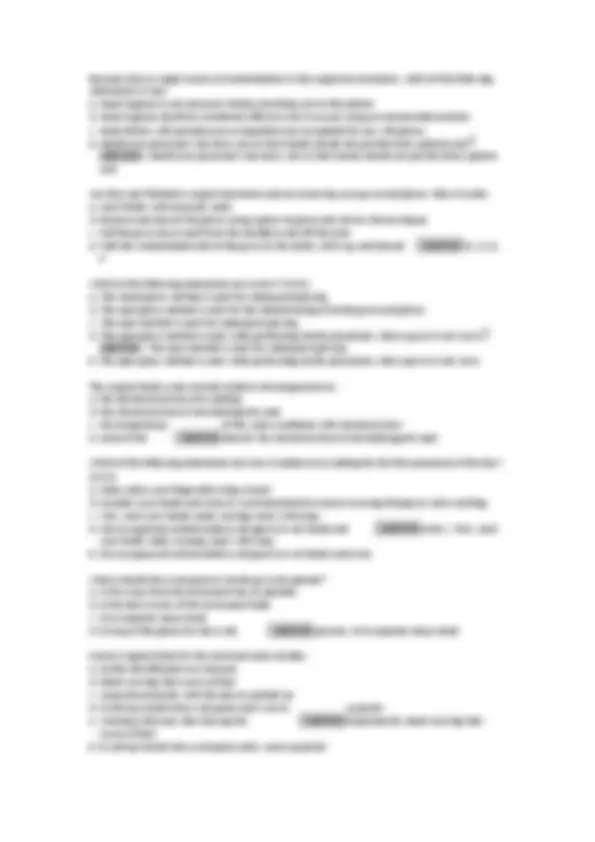
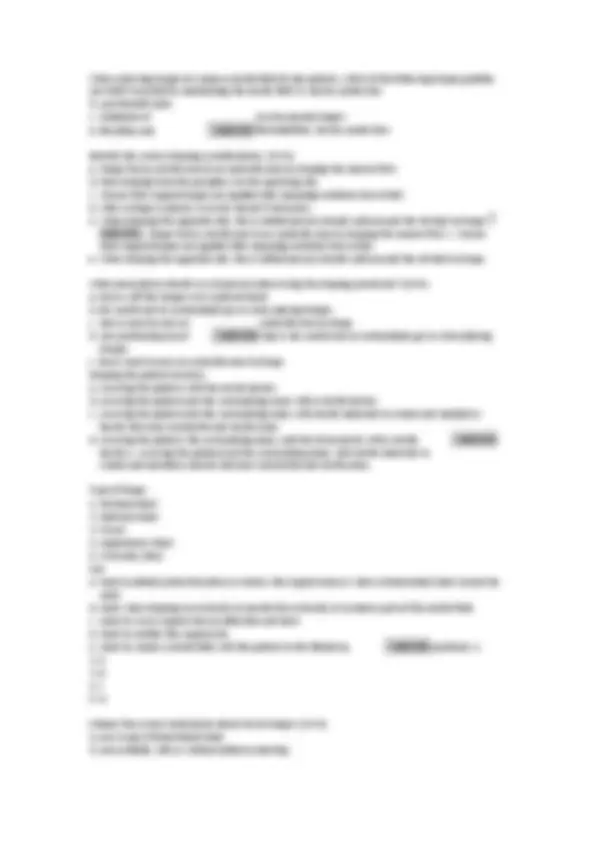
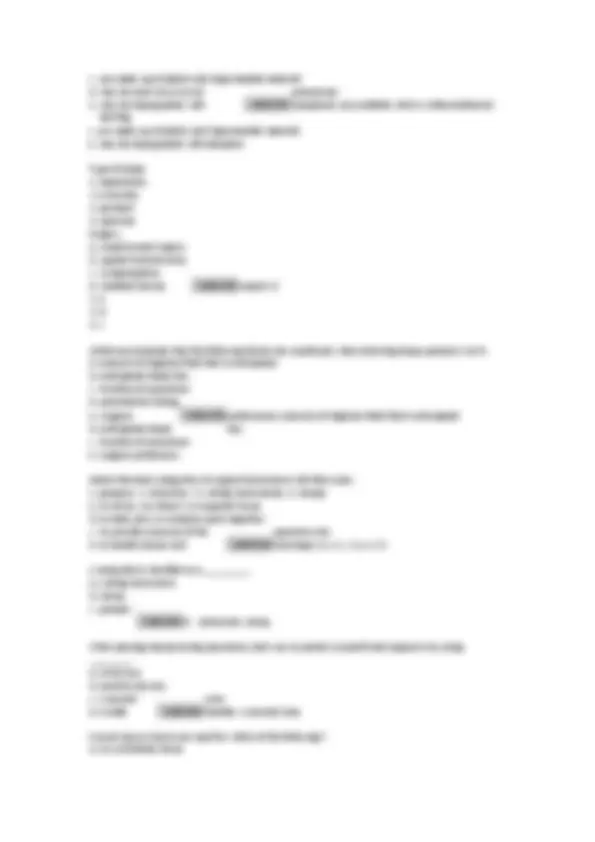
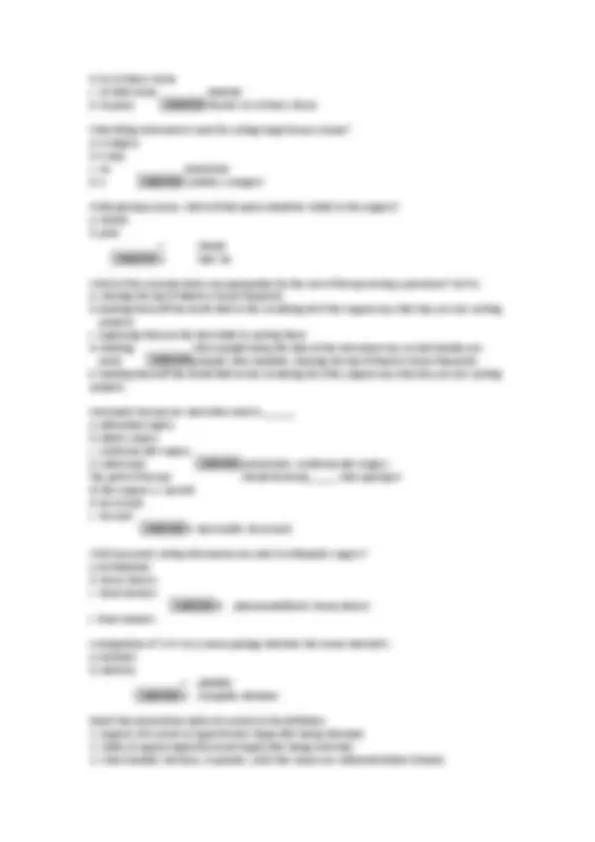
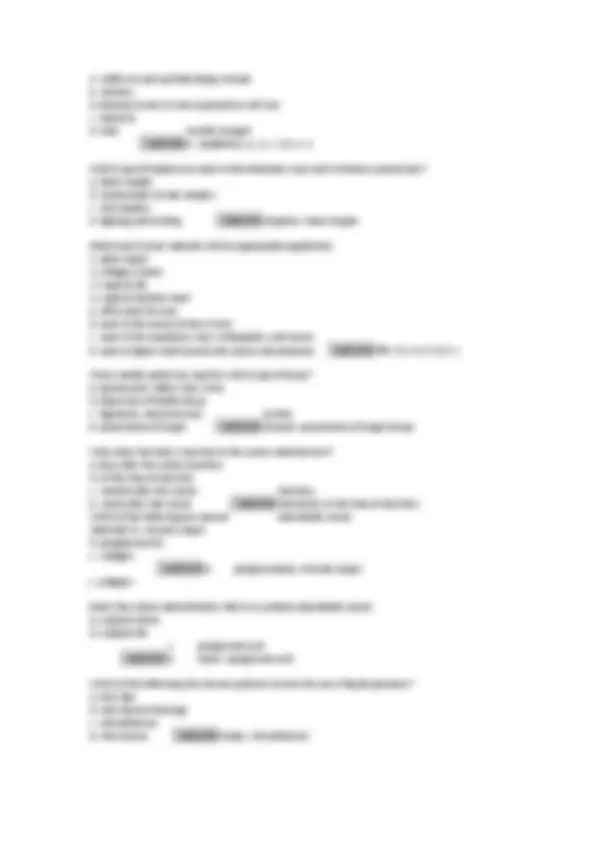
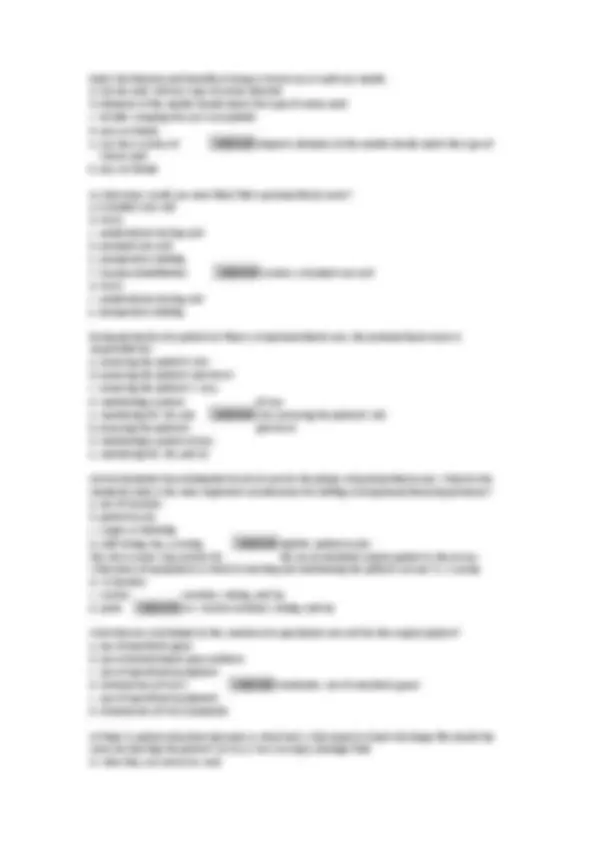
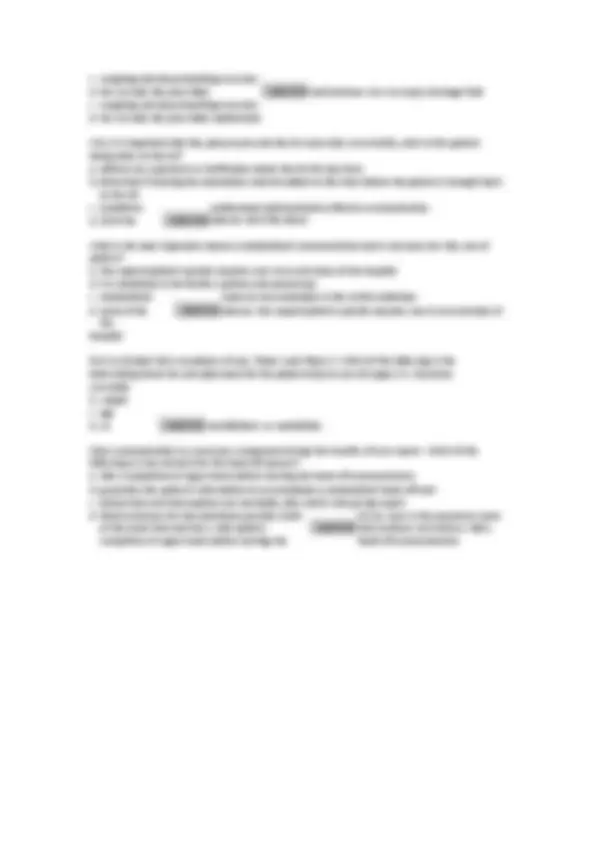


Study with the several resources on Docsity

Earn points by helping other students or get them with a premium plan


Prepare for your exams
Study with the several resources on Docsity

Earn points to download
Earn points by helping other students or get them with a premium plan
Community
Ask the community for help and clear up your study doubts
Discover the best universities in your country according to Docsity users
Free resources
Download our free guides on studying techniques, anxiety management strategies, and thesis advice from Docsity tutors
This document includes the latest verified real questions and correct answers from the 2025 AORN Review Final Exam. It comprehensively covers perioperative nursing principles including sterile field maintenance, surgical site infection (SSI) prevention, patient positioning, instrument handling, surgical counts, and AORN evidence-based practice guidelines. Ideal for nurses preparing for AORN certification, recertification, or facility-based competency reviews.
Typology: Exams
1 / 42

This page cannot be seen from the preview
Don't miss anything!



































Which of the following statements are true about objective data? a. Data that consists of the patient's own feelings and perceptions. b. Age, religion, or culture are examples of objective data. c. Data that is the information written in the patient's record and nursing notes. d. History, physical, and laboratory data are examples of objective data.c. Data that is the information written in the patient's record and nursing notes. d. History, physical, and laboratory data are examples of objective data. Match the age groups with their ability for learning and understanding.
e. spiritual or religious beliefsa. coping styles b. cultural beliefs and practices c. expectations of perioperative care e. spiritual or religious beliefs Which of the following statements is true? a. blood pressure remains constant with age. b. body temperature increases with increasing age. c. heart rate increases with increasing age d. lung capacity decreases with increasing aged. lung capacity decreases with increasing age Which of the following factors make geriatric patients more sensitive to injury and cold? a. decrease in subcutaneous fat b. lung capacity decreases with age c. bilirubin and hemoglobin shift d. rage of medication absorption is decreaseda. decrease in subcutaneous fat Why is it important to assess the use of herbal supplements or recreational drugs before surgery? a. herbal preparations can decrease the toxicity of other drugs administered during anesthesia. b. herbal preparations can affect bleeding times. c. herbal preparations can interfere with drug metabolism. d. recreational drug use can result in withdrawal symptoms. e. recreational drug users may require higher doses of anesthetic medications.b. herbal preparations can affect bleeding times. c. herbal preparations can interfere with drug metabolism. d. recreational drug use can result in withdrawal symptoms. e. recreational drug users may require higher doses of anesthetic medications. What interventions can the perioperative nurse perform to protect elderly patients? a. employ deep vein thrombosis prophylactic devices. b. position the patient for effective air exchange. c. slide patient onto the OR bed without use of assistive device. d. use warming devices to maintain the normothermia.a. employ deep vein thrombosis prophylactic devices. c. slide patient onto the OR bed without use of assistive device. d. use warming devices to maintain the normothermia. A child in which of the following age groups can be described as "likes to socialize and can interpret terms?" a. 1 - 12 months b. 1 - 3 years c. 3 - 6 years d. 6 - 12 yearsc. 3-6 years After the preoperative assessment has been conducted on a patient, the perioperative nurse should document: a. cuts and abrasions b. preoperative hair removal, if ordered c. skin condition d. financial arrangements
d. nasogastric tubes e. inadequate fluid replacement Any tissue or fluid removed from the body is documented and identified. some of the items included in the documentation accompanying specimens are: a. site, location, type of dressing, loss of fluid b. type of specimen, date and time of collection, and hypersensitive reactions c. date and time of collection, site, surgeon's name and contact infoc. date and time of collection, site, surgeon's name and contact info When documenting a dressing, the name of the person applying the dressing should be noted. a. true b. falseb. false Based on the knowledge you have gained about using abbreviations, identify the true statements about abbreviations. a. Abbreviations are to be used by physicians only. b. Abbreviations can lead to medical errors. c. Abbreviations are difficult to read. d. Abbreviations might be wrongly interpreted.b. Abbreviations can lead to medical errors. c. Abbreviations are difficult to read. d. Abbreviations might be wrongly interpreted. A successful lawsuit that an RN could be involved in: a. does not require patient injury b. only requires a nurse-patient relationship c. must show duty, breach, causation, and damages d. considers whether the patient has filed previous lawsuitsc. must show duty, breach, causation, and damages Based on the knowledge you have gained about legal aspects of documentation and nursing practice, which elements must be proved for a negligence claim to be successful? a. Damages: actual injury to the patient b. Breach of duty: care provided was not within the standard of care c. Reasonableness: a nurse in the same circumstance would have done the same thing d. Duty: a nurse-patient relationship exists e. Causation: what the nurse did or did not do resulted in patient injurya. Damages: actual injury to the patient b. Breach of duty: care provided was not within the standard of care d. Duty: a nurse-patient relationship exists e. Causation: what the nurse did or did not do resulted in patient injury When documenting, always include your assessment of the situation, the actions you took, and the patient's response to them. a. True b. Falsea. True Charting by exception is a time saver and ________. a. is easy even if you don't understand what is expected of a nurse b. does not require assessment skills c. is based on the premise that the patient manifests normal response to most interventions d. does not require documentation during the shift or notes on changes in the patient's progress ANSWER-c. is based on the premise that the patient manifests normal response to most interventions
Accurate preoperative documentation of the patient admission is an integral part of the nursing process. This includes: a. patient identification b. preoperative orders c. discharge referral d. patient assessmenta. patient identification b. preoperative orders d. patient assessment The primary purpose of documentation is to: a. be prepared in case a court case is filed b. make sure everything is written down c. record the chronological order of events during the nursing care of a patient d. relate any conversations and discussion with the patient or family in detailc. record the chronological order of events during the nursing care of a patient When documenting the placement of a surgical drain, which of the following components should be included? a. date for expiration noted on the packaging b. manufacturer's name c. serial number d. where the drain was placed on the patientd. where the drain was placed on the patient Which of the following is true about the use of abbreviations in perioperative documentation? a. there are only three possible words that could present problems in the clinical setting b. they are easy to interpret when writing orders c. they are not part of the Joint Commission and AORN safety goals d. they can put patients at risk for medication errorsd. they can put patients at risk for medication errors When documenting, the perioperative nurse should: a. document in a timely manner b. use medical diagnoses c. use nursing diagnoses based on sound judgement d. use patient statements to verify the nurse's findings e. document patient statements as factsa. document in a timely manner c. use nursing diagnoses based on sound judgement d. use patient statements to verify the nurse's findings Which of the following statements are true about informed consent? a. Needs to state the indications for the proposed intervention b. Is a physician's duty, and the RNs are witnesses to the patient's signature c. Does not expose the nurse to liability if the nurse does not follow hospital policy d. Does not allow approved substitutes to give consent for patient e. Must contain the name of the health care facility.a. Needs to state the indications for the proposed intervention b. Is a physician's duty, and the RNs are witnesses to the patient's signature e. Must contain the name of the health care facility. When documenting the use of a pneumatic tourniquet, which items should be included? a. cuff pressure b. location where the cuff was placed c. name of person who applied the tourniquet cuff d. name of person who inflated the tourniquet
a. When the scrub is setting up the back table. b. As close as possible to the time of implantation. c. While the cement is being mixed. d. Before anatomical reduction with the trial implants.b. As close as possible to the time of implantation. Which of the following statements are correct? (SATA) Medications and solutions should be transferred: a. via a sterile transfer device such as a sterile vial spike, filter straw, or plastic catheter. b. as fast as possible so the scrub is not away from the surgical field. c. into a receptacle that is placed at the back edge of the back table or held by a scrub team member. d. at the time that the back table is being set up.a. via a sterile transfer device such as a sterile vial spike, filter straw, or plastic catheter. c. into a receptacle that is placed at the back edge of the back table or held by a scrub team member. Regarding recommendation of continual monitoring of the sterile field. What is recommended in the event of a breach of sterile technique? a. Take corrective action immediately b. Consider any clamped instruments contaminated c. All perioperative personnel should monitor the sterile field for contamination d. All of the aboved. All of the above At what times should a sterile field be covered? (SATA) a. For procedural delays b. When the patient is being repositioned c. When the evening crew is setting up tables for next day cases. d. A separate closure field that contains dressing spongesa. For procedural delays b. When the patient is being repositioned Which of the following statements are true? (SATA) a. Scrubbed personnel should stay as close to the sterile field as possible. b. Door openings decrease OR environmental contamination by allowing air to escape from the OR. c. Scrubbed team members can turn their back on the sterile field when getting instruments or equipment from the back table. d. The number of people and movement within the OR may contribute to OR environmental contamination.a. Scrubbed personnel should stay as close to the sterile field as possible. d. The number of people and movement within the OR may contribute to OR environmental contamination. A large amount of data is collected in the event of an SSI. From the following, select all that are discoverable by the infection preventionist and other members of an interdisciplinary team. a. Intraoperative and postoperative delays. b. Hand hygiene and surgical hand antisepsis routines. c. Implementation of IUSS. d. Movement of personnel around and within the sterile field.b. Hand hygiene and surgical hand antisepsis routines. c. Implementation of IUSS. d. Movement of personnel around and within the sterile field. Adhesive incision drapes: a. without antimicrobial properties are preferred for most surgeries. b. may be used according to the manufacturer's instructions for use c. with antimicrobial properties should be used unless contraindicated
d. B & C e. All of the aboved. B & C In the event of an SSI, the infection preventionist will evaluate sterile technique practices. Which of the following will be reviewed by the infection preventionist and the interdisciplinary team? a. Implementation of Immediate Use Steam Sterilization (IUSS) b. Numbers and roles of all personnel who were in the OR during the case in question c. Heater/cooler device use d. A & B e. All of the abovee. All of the above. Match the terms given below with their definitions.
c. clamps the vessel d. swells, forming a clot1. c
c. thermalb. mechanical What precaution should be taken when microfibrillar collagen is used as a hemostatic agen intraoperatively? a. Antibiotics must be administered concurrently because of increased risk of wound infection. b. Moisten or wet agent to achieve hemostasis. c. Avoid using it with an autologous blood salvage unit. d. Protamine sulfate should be available as a reversal agent.c. Avoid using it with an autologous blood salvage unit. Which of the following drains allows for passive drainage of fluid from the body? (SATA) a. Jackson-Pratt b. Penrose c. T-tube d. Hemovacb. Penrose c. T-tube The benefits of a standardized count procedure include which of the following? (SATA) a. Assists in achieving accuracy during the count procedure. b. Assists in conducting efficient counts. c. Human error studies have shown that many errors result from deviation. d. Provides a bonding situation among perioperative team members.a. Assists in achieving accuracy during the count procedure. b. Assists in conducting efficient counts. c. Human error studies have shown that many errors result from deviation. Which type of dressing is used to prevent drying of the wound and increase proliferation of the epithelial cells? a. gauze b. pressure c. rigid support d. occlusived. occlusive Which of the following is true in handling hemostatic agents such as collagen or gelatin sponges? a. Should be moistened prior to use. b. Should not be left in the wound, since they are not absorbable. c. Are highly perishable and should be refrigerated prior to use. d. Must not be injected or allowed to enter large vessels, as extensive intravascular clotting may occur. d. Must not be injected or allowed to enter large vessels, as extensive intravascular clotting may occur. Based on the knowledge you have gained about ESUs and their usage, identify the statements below that are true about an ESU. (SATA) a. Electrosurgery is used to cut tissue. b. ESUs are a high radio-frequency electrical current. c. The active electrode is also referred to as "grounding pad." d. Bipolar current is most frequently used for electrosurgery. e. The dispersive electrode is also referred to as the "grounding pad."a. Electrosurgery is used to cut tissue. b. ESUs are a high radio-frequency electrical current. e. The dispersive electrode is also referred to as the "grounding pad." When using the ESU generator, the perioperative nurse should remember to:
d. Bipolar electrosurgery should not be used for surgery on brain or nerve tissue. e. Laparoscopic electrosurgery has the potential to cause capacitative-coupling injuries. f. AEC provides a secondary source of gas that can result in a rapid rise in the patient's intraabdominal pressure.a. In bipolar electrosurgery, both the active electrode and return electrode functions are performed at the site or surgery. b. AEC is a monopolar form of electrosurgery. e. Laparoscopic electrosurgery has the potential to cause capacitative-coupling injuries. f. AEC provides a secondary source of gas that can result in a rapid rise in the patient's intraabdominal pressure. Based on the knowledge you have gained about precautions when using an ESU, identify which of the following the perioperative RN should bear in mind when using an ESU on a patient with a pacemaker. (SATA) a. The distance between the active electrode and the dispersive electrode should be as short as possible. b. Both electrodes should be as far from the pacemaker as possible. c. The dispersive electrode should be placed in such a position that the current from the active electrode does not pass through the vicinity of the patient's heart or through the pacemaker. d. The nurse need not consult the patient's cardiologist. e. All ESU cables and cords should be kept away from the pacemaker and its leads. f. Monopolar current is preferred.a. The distance between the active electrode and the dispersive electrode should be as short as possible. b. Both electrodes should be as far from the pacemaker as possible. c. The dispersive electrode should be placed in such a position that the current from the active electrode does not pass through the vicinity of the patient's heart or through the pacemaker. e. All ESU cables and cords should be kept away from the pacemaker and its leads. Which of the following types of smoke evacuation devices are considered primary protection. (SATA) a. Smoke evacuator b. fit-tested n95 respirator c. central suction system with a 0.1 micrometer in-line filter d. high-filtration surgical mask e. central suction system with HEPA in-line filtera. Smoke evacuator c. central suction system with a 0.1 micrometer in-line filter e. central suction system with HEPA in-line filter Components of the electrosurgical circuit include: a. active electrode, dispersive electrode, and generator b. dispersive electrode, fiber, and generator c. active electrode, dispersive electrode, generator, and scratch pad d. dispersive electrode, fiber, generator, and keya. active electrode, dispersive electrode, and generator To reduce the possibility of an injury or burn, which of the following most accurately describes where the perioperative RN should place the dispersive electrode? a. as far from the operative site as feasible b. directly on the operative site c. as close to the operative site as feasible d. anywhere it will be easy to accessc. as close to the operative site as feasible Which statement best describes the path for bipolar surgical current? a. Current leaves the generator, is applied to tissue using a pencil device, is collected in the dispersive pad, and returns to the generator. b. Current leaves the generator, is applied to tissue using a pencil device, and returns to the generator.
c. Current leaves the generator, is applied to tissue using a two-poled instrument, and returns to the generator.c. Current leaves the generator, is applied to tissue using a two- poled instrument, and returns to the generator. If the surgeon continuously asks for higher power settings, what is the first action that the perioperative RN should take? a. Get another ESU unit immediately. b. Check the circuitry for possible disruption. c. Switch to a bipolar generator and electrode. d. Change the active electrode and dispersive electrode.b. Check the circuitry for possible disruption. Alternate pathway burns can occur because of improper placement of the dispersive electrode. The dispersive electrode SHOULD NOT be applied on which of the following (SATA): a. hairy skin surfaces b. burn tissue c. well-perfused muscle d. bony prominencesa. hairy skin surfaces b. burn tissue d. bony prominences When using argon-enhanced coagulation (AEC), there is a risk of: a. electrosurgical injuries b. carbon dioxide purge c. gas emboli d. decreased insufflator pressurec. gas emboli The term local exhaust ventilation (LEV) is used to describe the process of evacuating smoke from the surgical site. Which of the following are considered LEV? (SATA) a. Central suction system with 0. micrometer in-line filter b. Central suction system with HEPA in-line filter c. High filtration surgical masks d. N95 respirators e. Smoke evacuator unita. Central suction system with 0.1 micrometer in-line filter b. Central suction system with HEPA in-line filter e. Smoke evacuator unit Which precautions should be taken for a patient who has an implantable electronic device (IED)? SATA a. All team members should be informed about the IED. b. Insist that the surgeon use bipolar current instead of monopolar current. c. There should be intermittent EKG monitoring. d. The active and dispersive electrodes should be located as close together as possiblea. All team members should be informed about the IED. d. The active and dispersive electrodes should be located as close together as possible According to the AORN Guideline for Safe Use of Energy-Generating Devices, which of the following are recommended components of documentation when using an ESU? (SATA) a. location of the dispersive electrode b. serial or biomedical device number c. ESU brand name d. Patient's skin condition before and after applying the dispersive pada. location of the dispersive electrode b. serial or biomedical device number
Disassembly, cool water rinse, enzymatic wash, and use of appropriate detergent are principles used in: a. decontamination b. steam sterilization c. high-level disinfection d. gas plasma sterilizationa. decontamination Based on what you have learned about prion disease, identify the facts that are true about prions. SATA a. Prions are not bacteria or viruses but rather malformed proteins. b. Creutfeldt-Jakob disease is a degenerative neurologic disease that appears to be caused by prions. c. Prions appear to be resistant to most forms of sterilization used in health care settings. d. Prions appear to have a marked vulnerability towards moist heat.a. Prions are not bacteria or viruses but rather malformed proteins. b. Creutfeldt-Jakob disease is a degenerative neurologic disease that appears to be caused by prions. c. Prions appear to be resistant to most forms of sterilization used in health care settings. During the assembly process, instruments should be placed in a specifically designed container that restricts the penetration of the sterilizing agent and prevents the trapping of air. True/falseFalse During assembly, instruments should be arranged in sets and placed in a tray with a mesh or perforated bottom or specifically designed container that permits the penetration of the sterilizing agent and prevents the trapping of air. Packaging systems should: a. permit sterilization to take place. b. maintain sterility for a limited period. c. be structured to provide for aseptic delivery of the contents onto the sterile field. d. be compatible with the sterilization process. e. be used according to the manufacturer's written instructions.a. permit sterilization to take place. c. be structured to provide for aseptic delivery of the contents onto the sterile field. d. be compatible with the sterilization process. e. be used according to the manufacturer's written instructions. After completion of the steam sterilization cycle, wrapped, sterilized items should be: a. placed on metal table until cooled b. used immediately. c. left untouched to cool for 30- 60 minutes. d. left untouched to cool for 15- 30 minutes.c. left untouched to cool for 30- 60 minutes. Based on what you have learned about peracetic acid sterilization, identify the facts which are true regarding peracetic acid sterilization. SATA a. Is is a liquid chemical sterilization method. b. Is uses low temperature. c. Is it equal in efficacy to steam and ethylene oxide (EO) sterilization. d. It requires the use of a special unit designed for this type of sterilization. e. It can be used for all surgical items.a. Is is a liquid chemical sterilization method. b. Is uses low temperature. c. Is it equal in efficacy to steam and ethylene oxide (EO) sterilization. d. It requires the use of a special unit designed for this type of sterilization.
Based on what you have learned about ethylene oxide sterilization, complete the following sentence. Complete sterilization in ethylene oxide is dependent upon four primary variables: proper time, humidity, temperature, and: a. proper packaging b. aeration c. gas concentration d. pressurec. gas concentration Match implant to surgery type. Implants
c. Provide optimal exposure. d. Maintain the patient's airway.b. Provide access to monitoring devices and IV lines. c. Provide optimal exposure. d. Maintain the patient's airway. Based on the knowledge you have gained about the supine position, identify the correct statements. a. The supine position is used only for breast surgery. b. The patient lies flat on his or her back with arms extended at a less than 90-degree angle on padded arm boards. c. Arm extension should be less than 45 degrees. d. There is an increase in the systolic pressure. e. There is a decrease in the diaphragmatic expansion. f. Use a heel-suspension device to redistribute heel pressure.b. The patient lies flat on his or her back with arms extended at a less than 90 - degree angle on padded arm boards. e. There is a decrease in the diaphragmatic expansion. f. Use a heel-suspension device to redistribute heel pressure. Identify the position that causes each complication. Complications: a. Venous pooling in the lower extremities and hypotension related to the position and the affect of anesthesia. b. Cyanosis and increased vascular load from the lower extremities to the heart and respiratory embarrassment due to decreased lung volume. c. Decrease in brainstem perfusion and decreased cardiac return. Position:
b. prone c. lateral d. Kraske e. trendenlenburga. supine Match surgical position with physiological effect. Position: a. supine b. Trendelenburg c. Reverse trendelenburg d. Lithotomy e. sitting or semi-sitting f. prone g. lateral recumbent Effect: